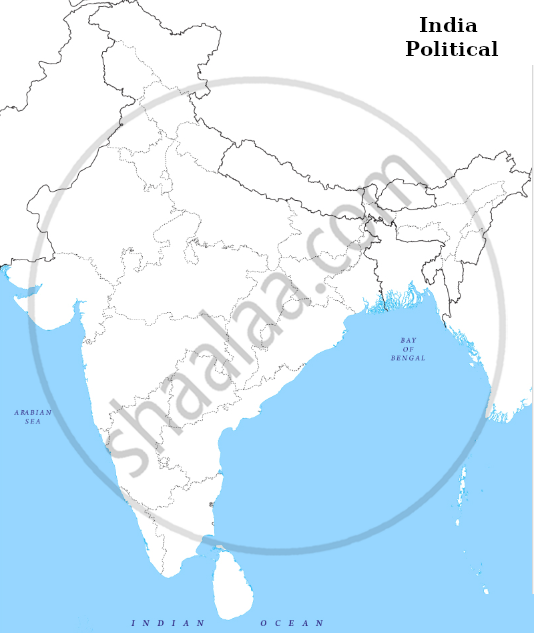Advertisements
Advertisements
प्रश्न
On the given political outline map of India mark and label of the follow with appropriate symbol:
The place where Jallianwala Bagh Massacre happened.

उत्तर

APPEARS IN
संबंधित प्रश्न
Answer in 100-150 Words
How Did Mahatma Gandhi Seek to Identify with the Common People?
Answer in 100-150 Words
How Was Mahatma Gandhi Perceived by the Peasants?
Answer in 100-150 Words
Why Was the Charkha Chosen as a Symbol of Nationalism?
Write a Short Essay (250-300 Words) on the Following:
How Was Non-cooperation a Form of Protest?
Write a short essay (250-300 words) on the following:
In what way did Mahatma Gandhi transform the
nature of the national movement?
A series of ‘Praja Mandals’ was established to promote nationalist creed in ______.
Who led the Khilafat Movement in India?
Match the following.
| (i) | Jallianwala Massacre | (a) | 1918 |
| (ii) | Peasant movement in Kheda | (b) | April 1919 |
| (iii) | Second Round Table conference | (c) | 1939 |
| (iv) | Second World War started | (d) | 1931 |
Choose the correct option.
Gandhiji took back Non-Cooperation movement in ______.
On the given political outline map of India, locate and label the following with the appropriate symbol:
The place where Gandhiji withdrew Non-Cooperation Movement.

On the given political outline map of India, locate and label the following with the appropriate symbol:
The place where Gandhiji started satyagraha for the indigo planters.

Consider the following events:
- Jallianwala Bagh Massacre
- Khilaf at Movement
- Formation of Swaraj Party
- Arrival of Simon Commission
The correct chronological order of these events is:
Who drafted the resolution on fundamental rights for the Karachi Session of Congress in 1931?
In which Satyagraha, Gandhiji asked for the remission of taxes for peasants following the failure of their harvest?
In which year, Jallianwala Bagh Massacre took place?
What was the main demand of khilafat movement?
Consider the following statement regarding Rowlatt Satyagraha
- Rowlatt Act was passed in the year 1915.
- It was passed on the recommendation of a committee chaired by Justice CN Broomfield.
- This Act permitted detention without trial.
- Gandhiji called for a countrywide campaign against this Act.
Which of the above statements is/are not correct?
Match the following.
| List I | List II |
| A. Parallel government | 1. Dandi |
| B. Assassination of Mahatma Gandhi | 2. Amritsar |
| C. Salt Satyagraha | 3. Delhi |
| D. Jallianwala Bagh Massacre | 4. Satara |
"Mahatma Gandhi's own role was vital in the growth of 'Gandhian Nationalism' but it also depended on his followers". Explain the statement with examples.
Assertion (A): Gandhiji called for a countrywide agitation against the Rowlatt Act.
Reason (R): British authorized the government to imprison people without trial.
Describe the causes and events of the 'Non Co-operation Movement'.
